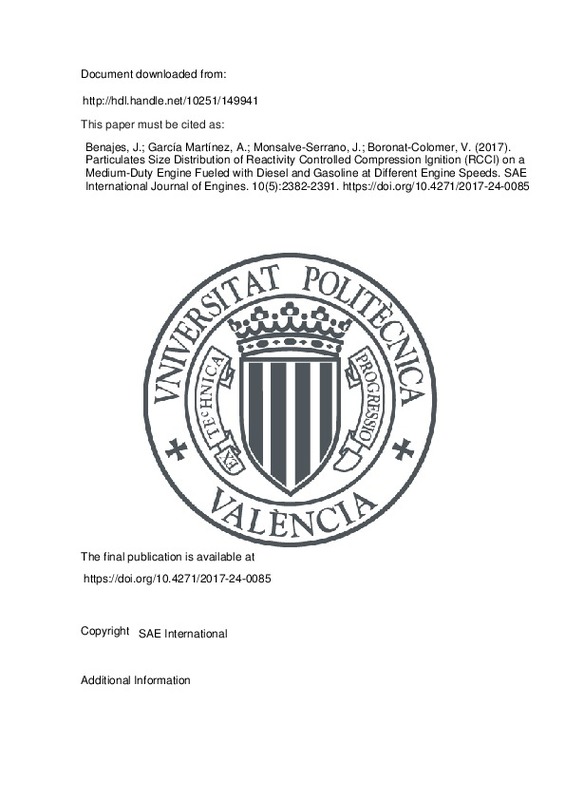JavaScript is disabled for your browser. Some features of this site may not work without it.
Buscar en RiuNet
Listar
Mi cuenta
Estadísticas
Ayuda RiuNet
Admin. UPV
Particulates Size Distribution of Reactivity Controlled Compression Ignition (RCCI) on a Medium-Duty Engine Fueled with Diesel and Gasoline at Different Engine Speeds
Mostrar el registro completo del ítem
Benajes, J.; García Martínez, A.; Monsalve-Serrano, J.; Boronat-Colomer, V. (2017). Particulates Size Distribution of Reactivity Controlled Compression Ignition (RCCI) on a Medium-Duty Engine Fueled with Diesel and Gasoline at Different Engine Speeds. SAE International Journal of Engines. 10(5):2382-2391. https://doi.org/10.4271/2017-24-0085
Por favor, use este identificador para citar o enlazar este ítem: http://hdl.handle.net/10251/149941
Ficheros en el ítem
Metadatos del ítem
| Título: | Particulates Size Distribution of Reactivity Controlled Compression Ignition (RCCI) on a Medium-Duty Engine Fueled with Diesel and Gasoline at Different Engine Speeds | |
| Autor: | ||
| Entidad UPV: |
|
|
| Fecha difusión: |
|
|
| Resumen: |
[EN] This work investigates the particulates size distribution of reactivity controlled compression ignition combustion, a dual-fuel concept which combines the port fuel injection of low-reactive/gasoline-like fuels with ...[+]
|
|
| Palabras clave: |
|
|
| Derechos de uso: | Reserva de todos los derechos | |
| Fuente: |
|
|
| DOI: |
|
|
| Editorial: |
|
|
| Versión del editor: | https://doi.org/10.4271/2017-24-0085 | |
| Título del congreso: |
|
|
| Lugar del congreso: |
|
|
| Fecha congreso: |
|
|
| Código del Proyecto: |
|
|
| Agradecimientos: |
This investigation has been funded by VOLVO Group Trucks Technology. The authors also acknowledge the Spanish economy and competitiveness ministry for partially supporting this research (HiReCo TRA2014-58870-R). The ...[+]
|
|
| Tipo: |
|







![[Cerrado]](/themes/UPV/images/candado.png)


